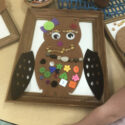Welcome!
Introduction
Realities
The author goes on to describe a classroom “already in progress” and to share how these teachers have “flipped their thinking.” “Where these educators used to worry about covering the material, they now plan how to evoke kids’ curiosity. When they once focused on assigning and assessing finished products, they now teach thinking: problem posing, researching, vetting, corroborating, analyzing, criticizing, and presenting.”
These teachers have two “watchwords,” which alludes to the role of the inquiry teacher:
1) Honor kids’ own questions.
2) Make the required curriculum into questions kids can’t resist investigating.
Easier said than done – right? The author then goes on to talk about the small steps the teachers took in “dipping their toe in the water” of inquiry. I think it is important to remember that we can start small as well as consider the idea that maybe not everything needs (or even should) be taught through inquiry.
Inquiry Approach vs. Coverage Approach
How Do We Assess Student-Driven Inquiry?
Chapter 1
In This Chapter
We’ve all had those moments when you are writing in front of the children or telling them a story from your own life and you look out at their little faces and see that they are really engaged!
This chapter encourages you to share your thoughts, ideas, stories, and curiosities with children so they will get to know you and see you as a curious learner!
Included are several examples of how teachers have done this in their classroom through sharing a personal struggle and goal, talking about your reading, showing how you take a risk, and demonstrating inquiry as a team.
What I’ve Tried
The stories in the book opened my eyes to some new avenues for demonstrating curiosity. When I think about ways I might already be doing this, I think of “wondering aloud” as I read and write in front of children as well as being on the lookout for opportunities to bring nature into the classroom as these “treasures” often come with a personal story.
Like the day I was out running and found a wooly bear caterpillar in the middle of the road. I carefully prepared a “home” for it in hopes that we could watch its transformation. The story went in a different direction when too much rain got into the air holes and well….. you can imagine what happened!
Or the night my husband accidentally hit a baby rabbit with a weed wacker and brought it home in his attempt to save it. This story didn’t end well either!
Then there was the worm I found on my mother’s driveway right in the middle of our study on soil and decomposition. I’m happy to say that he lived happily ever after in the compost we built for him!
While I shared these stories and curiosities with the children, I realize now I could have brought them in on the research end a little more! In each case, I had to find out how best to care for the animal. I did this on my own, and missed some great opportunities for learning.
What I’d Like to Try
Here are some examples of ways I might use the morning message to spark inquiry:
Your Turn
What are some ways you have demonstrated curiosity in your classroom? What are some ideas you’d like to try? Would love to hear your thoughts and ideas – feel free to share in the comments!
Chapter 1: Demonstrate Your Own Curiosity
Chapter 2: Investigate Ourselves and Our Classmates
Chapter 3: Capture and Honor Kids’ Questions
Chapter 4: Begin the Day with Soft Starts
Chapter 5: Check Our News Feed
Chapter 6: Hang Out with an Expert
Chapter 7: Pursue Kids’ Own Questions with Mini-Inquiries
Chapter 8: Address Curricular Units with Mini-Inquiries
Chapter 9: Lean Into a Crisis
Thanks for stopping by!







 3 Ways to Add New Materials to Your Kindergarten Play Centers
3 Ways to Add New Materials to Your Kindergarten Play Centers Christmas Kindness Countdown Calendar
Christmas Kindness Countdown Calendar Curious Classroom Book Study: Capture and Honor Kids’ Questions
Curious Classroom Book Study: Capture and Honor Kids’ Questions Kindergarten Inquiry, Projects and STEAM Ideas Across the Seasons
Kindergarten Inquiry, Projects and STEAM Ideas Across the Seasons
I read this book over the summer and started to implement it some with my class. I put up a “What are you curious chart?” in my classroom. My favorite take aways from the first few chapters were “honor kids’ own questions” and “take small steps.”